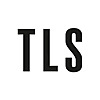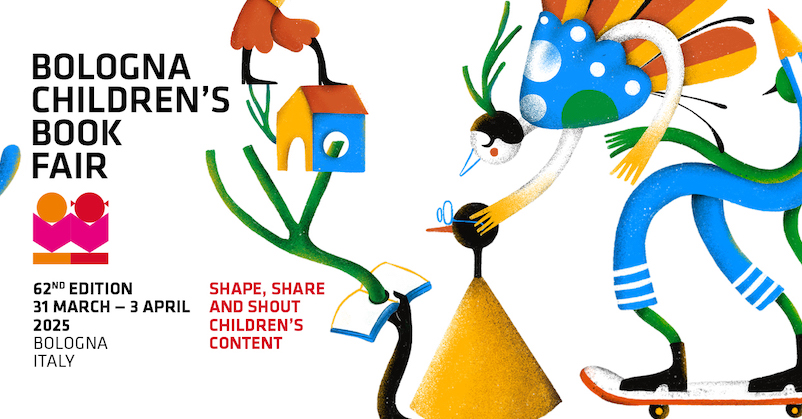In 1927, twenty-one-year-old Ithell Colquhoun enrolled at the Slade School of Art in London, where the legendary professor Henry Tonks described her as an “artist of rare ability”. “The only danger in your development”, he wrote to her, “is that with your active and curious mind you may be led to run after all strange objects. You go out to gather strawberries and come back with two strange beetles and a spider instead.” His words were prescient. For Colquhoun, an artist to whom conventional categories existed to be blown apart, the world throbbed with primordial energies. Decoding their myriad meanings was to become her lifelong work.
With more than 200 paintings, drawings, photographs, books and archival materials from the 1920s to the 1980s (selected from more than 5,000 objects in Tate’s collection), this enthralling show is the most comprehensive exhibition of the artist’s work to date. Across six colourful galleries, divided into loosely chronological sections, we trace her journey from her student days, when she created large, theatrical paintings, to her immersion in surrealism and her final years, preoccupied by the possibilities of magic and abstraction. The story is told with a mix of artworks and ephemera: gallery notices, newspaper clippings and books, written both by Colquhoun and by the artists and writers who influenced her, such as André Breton, Aleister Crowley, P. D. Ouspensky and W. B. Yeats. There are many surprises, not least a series of shots of Colquhoun demonstrating surrealist techniques for the BBC programme Eye of the Artist: Fantastic art (1948), and a photographic spread of the artist sunbathing on beaches in Corsica and Menton, used to illustrate an article she wrote for the London Bulletin in 1939, titled “What Do I Need to Paint a Picture?”.
Born in India in 1906 to a British colonial family who returned to England when she was one, Colquhoun felt a profound connection to her birthplace and a lifelong sense of loss at having left it so young. From an early age she had seen fairies; she believed in spirits and was enthralled by astrology and myths, magic and nature. At the Cheltenham School of Arts and Crafts, where she enrolled for a year before the Slade, she wrote a one-act play about an alchemical quest, The Bird of Hermes, later to evolve into a novel, Goose of Hermogenes (1961; see page 16). It was inspired by Ripley Scroll, a fifteenth-century manuscript that outlined the processes involved in creating the philosopher’s stone, a legendary substance searched for by alchemists who believed that it could transmute base metals into “noble” metals such as gold and was the vital ingredient for the elixir of life. Colquhoun’s costume designs for the play leap to life in photographs shown alongside them of the ensuing performance: in a white leotard embossed with snaking, swirling patterns, the artist gazes upwards like a proud yogi; her face haughty, her strong, bare legs as supple as a dancer’s. She poses with three performers: one in striped trousers, another in knickerbockers edged in gold, and yet another wrapped in a ribbon, like a gift.
Colquhoun was supported by a family trust fund, with the financial freedom unfamiliar to many of her peers, so it was relatively easy for her to pursue her interests into adulthood. From her early twenties, she turned to herself as a subject, and her many self-portraits, a selection of which greet visitors to her exhibition, testify to her restless self-scrutiny and experimentation. In “No.7. (self-portrait), Candle-light” (c.1927–30), she stares out with cat-like eyes from a face reconfigured as a mosaic of flat planes of shadow and light. If, at first glance, a self-portrait from 1929 in tones of brown appears a little drab, at second glance it’s nothing of the sort. The artist depicts herself with her fashionable bobbed hair, a simple white top and a green skirt in an ominous landscape of large stony, snaky shapes. Her left leg is raised, offering a provocative glimpse of thigh, but her expression is defiant, as if rebutting any criticism. Clearly, she’s a powerful creature in a strange land. (Or, possibly, a strange creature in a powerful land.) In 1935, gazing off to her left, she conjures herself in spidery lines and washes of ink, her eyes baggy with exhaustion, as if she’s been up all night carousing with spirits. By the late 1940s, using “fumage”, a process involving a naked flame being wafted over the surface of the paper, she imagines herself as a dissolving, biomorphic being.
In 1928, Colquhoun joined the Quest Society, which was founded in 1909 by George Robert Stow Mead – scholar and theosophist – to explore esoteric traditions, ancient religions and philosophies, all of which she believed to be as relevant to modernity as the latest theories. The following year, she was awarded joint first prize in the Slade’s Summer Composition Competition, which required students to respond to the subject of “Judith showing the head of Holofernes”, with a riotously modern work that shows the muscular heroine against a backdrop of fantastical buildings. Striding forth in a scarlet dress, she holds the dead general’s head aloft like a lantern, as her maid raises her shawl like a victory banner. In front of her are three curious figures: they could be spirits, or demons, or soldiers from an unearthly realm, crouching around a fire from which a mysterious curved shape emerges.
As the curator, Katy Norris, observes in one of the many excellent catalogue essays:
Her student work exemplifies how from an early stage Colquhoun applied dense esoteric theory to challenge accepted gender norms, depicting scenes of female liberation and spiritual transcendence that were often underpinned by alternative narratives of sexual power and male disenfranchisement.
A group of paintings from Colquhoun’s student days are displayed in a lilac-hued gallery; their energy and invention leap off the wall. In psychologically charged works such as “Demeter and Persephone” (1928) and “Marlowe’s Faust” (1930), she once again retells old stories in new clothes. In “Death of the Virgin” (1931), she supplants the Middle East of two millennia ago with what could be a bedsit in Bayswater. The pale, blonde Madonna, surrounded by an eccentric cast of characters, is pictured with her closed eyes on a large brass bed in a tiny room, lit like a stage set. The meaning is ambiguous; time as unstable as the deck of a ship in a high storm.
On the island of Mykonos in 1933, Colquhoun, who had had numerous affairs with men, fell in love with an older Greek woman, Andromaque Kazou. As was her wont, she examined her feelings through the prism of myth. “Her beauty must be lunar”, she writes in her unpublished story, “Lesbian Shore”, a few pages of which are on display:
her morbid charm derives from the pallid spell-weaving of Hecate … I did not try to analyse the stirrings within me, I could not reflect upon them while thus borne along. It was not until later and in calmer intervals, that I recognised this torrent that swirled me onwards as the ‘swift Hebrus’. I was being carried, indeed, to the “Lesbian shore”.
Same-sex desire often hummed beneath the surface of Colquhoun’s work. In 1939, it emerged in a group of forty-two collages, archly titled Bonsoir, a series of black-and-white photographs cut from popular magazines that tell, obliquely – via fragmented images of a watch, a lipstick, a champagne glass, women glancing at each other against dancers’ legs and so on – the story of a lesbian love affair. It was possibly designed as a storyboard for an unrealized surrealist film.
Bonsoir is included in “Into Surrealism”, a section of the exhibition that charts Colquhoun’s growing interest in the movement and includes a vitrine filled with invitations to some of her shows, the catalogue of the International Surrealist Exhibition held in London in 1936 and Man Ray’s famous portrait of Colquhoun, which he shot in the early 1930s. With her thin eyebrows and painted lips, she poses in a smart white patterned dress that reveals, like her self-portrait of 1929, a flash of thigh. So far, so modern. However, she’s also cradling a sheaf of wheat – a nod to her identification with Demeter, the ancient Greek goddess of the harvest and fertility.
Surrealism, with its privileging of unseen forces and rejection of social norms, could have been custom made for Colquhoun. At the International Surrealist Exhibition, she was in the audience when Salvador Dalí́ – in a diving suit, holding a billiards cue and two wolfhounds on a leash – tried to give a lecture on “Some authentic paranoiac phantoms”. (His ambition was thwarted when he began to suffocate inside his helmet and was saved by an artist with a spanner). Opposite Bonsoir are her studies from 1936 of uncanny, Dalí-esque blooms: lush magnolias larger than houses; a canna lily as radiant as a blood stain; crane flowers as delicate as butterfly wings; a sunflower staring like a large brown eye.
Arguably Colquhoun’s best-known painting, “Scylla (Méditerranée)” (1938), glows like a portal against a dark purple wall. It comprises two large, rocky outcrops in the sea that touch at their extremities; beneath a limpid sky, a small white boat zooms towards the gap between them; tangled red and green seaweed glimmers in the translucent water. Look again, however, and the image shifts: now it’s a view of a female body from the perspective of someone lying in a bath. Her phallic thighs are rocks, her pubic hair is seaweed. The painting’s title refers to the Homeric myth of the six-headed female monster who terrorized the seas, devouring sailors.
When Tate acquired the painting, Colquhoun was asked if it was inspired by a dream. She replied: “It was suggested by what I could see of myself in a bath – this, with a change of scale due to ‘alienation of sensation’, became rocks and seaweed. It is thus a pictorial pun, or double-image in the Dalíesque sense – not the result of a dream but of a dreamlike state.” As a self-portrait, it’s wonderfully playful. Colquhoun pictures herself as a landscape, a monster, a sea nymph; a woman with strong thighs who likes a bath. Attempt to pin her down at your peril.
In 1939, she had met a group of young surrealists, including Roberto Matta and Gordon Onslow Ford, at a château in Chemillieu, France. Together they explored Breton’s psychoanalytically inspired concept of “psychic automatism”: a method of creating images without conscious thought. They termed the approach “psychological morphologies”, which Colquhoun shortened to “psychomorphologies” – an idea that was to preoccupy her for decades in both her writing and her artworks. In 1947, at the Mayor Gallery in London, she exhibited her automatic paintings for the first time as a group. A pulsating selection is on view. With titles that allude to nocturnal states – “Attributes of the Moon”, “Tendrils of Sleep I”, “Dreaming Leaps” and so on – images emerge from swathes of turbulent paint that has been dripped, pressed, spattered and shaped into forms that, while ostensibly abstract, allude to bodies and landscapes, both mortal and celestial.
In her essay “The Mantic Stain” (1949) – a typescript of which, along with the updated 1951 version, “Children of the Mantic Sun”, is on view – Colquhoun outlined the divinatory potential of psychomorphology and automatic techniques such as fumage and decalcomania, which was developed in the eighteenth century: it involves applying a material, such as paper or canvas, to a wet image, then lifting it off, thereby creating a distorted mirror image of the original design.
During her four decades in the wilds of Cornwall, where she moved after the devastation of the Second World War and an acrimonious divorce in 1947 from the artist Toni del Renzio, Colqhoun was untiring in her spiritual quest. From 1962, she signed her works with a monogram of her adopted magical name: Splendidior Vitro – which translates as “more sparkling than crystal”. She found constant inspiration in Cornwall’s ancient stone crosses, holy wells and megalithic structures – “living stones” that she believed embodied the “psychic life of the land” – and in 1964 she began using enamel paint to create what she termed “convulsive landscapes”: studies of nature that reveal the earth to be a living, breathing, dreaming entity. Concerned about the impact of environmental destruction on cosmic harmony, in her introduction to her poetry collection Grimoire of the Entangled Thicket (1973), she explains:
In 1971, I made a number of drawings based on the automatic process known as decalcomania, which evoke the spirit of various trees – Beech, Rowan, Ash, Willow, Oak, Vine and Silver Fir. Some of these I offer to the White Goddess as a time when wasteful technology is threatening the planet life (and with it all organic life) of earth and the waters.
The final room of Between Worlds vibrates with abstracted, otherworldly forms. In 1977, the year she was ordained as a Priestess of Isis, Colquhoun designed a set of seventy-eight taro (her preferred spelling) cards in kaleidoscopic swirls of enamel paint that are aglow, vivid against indigo walls. Eschewing traditional representations of archetypes such as Fool, Prophetess, Hangman and so on, the images were created with a combination of automatism and Golden Dawn colour theories. Her last major work, the “Decad of Intelligence” (1978–9), is a visual study of the kabbalistic Tree of Life. The curators chose to exhibit the book as a projection, also in the last room, as a homage of sorts to Colquhoun’s statement in her 1978 essay “Taro as Colour”:
After I had completed the pack, I saw some slides showing nebulae in outer space and the birth of stars. These recalled my designs and confirmed my conviction of their cosmographic function.
As with her tarot deck, Ithell Colquhoun employed a highly symbolic colour scheme, trusting her audience to rise to the challenge of decoding it. She never hesitated in her belief that art, used properly, was a portal to other worlds where anyone could access the knowledge they might need to heal, grow or learn. All the journey required was an openness to energies, new and old.
Jennifer Higgie’s most recent book is The Other Side: A journey into women, art and the spirit world, 2023
The post Dreaming leaps appeared first on TLS.

 By Times Literary Supplement | Created at 2025-03-26 14:07:19 | Updated at 2025-04-04 05:13:41
1 week ago
By Times Literary Supplement | Created at 2025-03-26 14:07:19 | Updated at 2025-04-04 05:13:41
1 week ago







